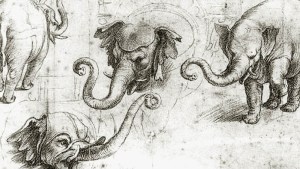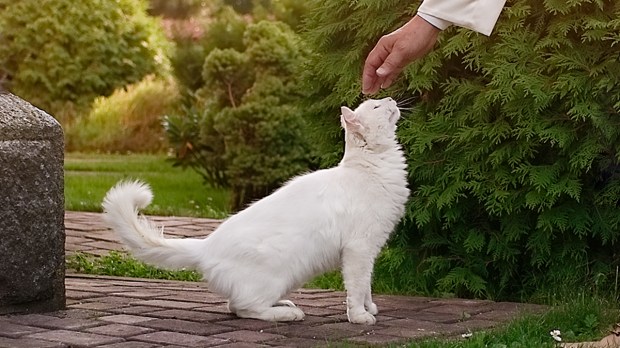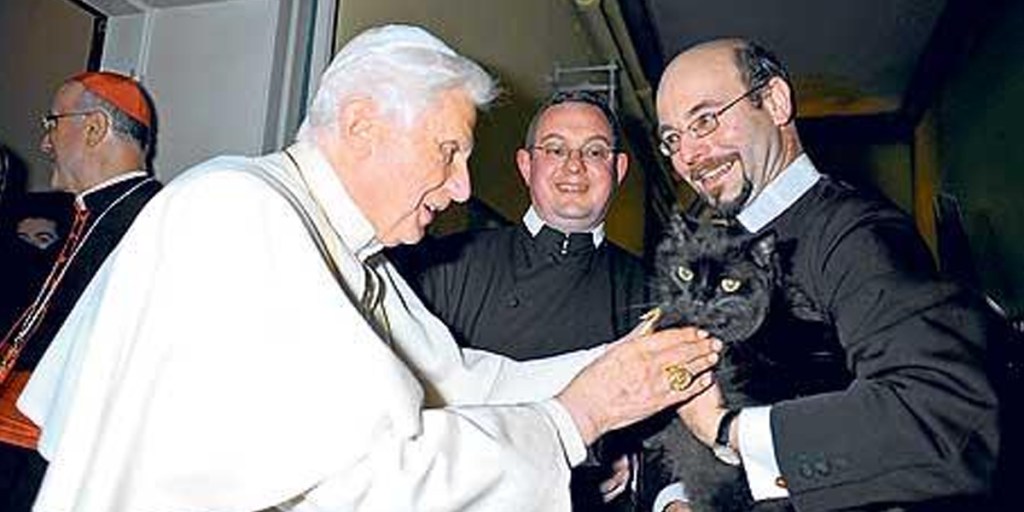The rules are clear: It’s strictly forbidden for a cat or a dog to enter the Vatican. Does the only state in the world officially devoid of any representatives of canine and feline breeds have a problem with man’s two best friends?
No, but the rule is the rule, and it results from simple practical reasoning: The Vatican is, for those who frequent it daily, a place of work and faith, and therefore not very compatible with barking and meowing and animal waste.
In 2014, an Italian pro-animal organization begged Pope Francis to open his doors to four-legged companions, without success. Some critics consider that this ban speaks volumes about the Catholic Church’s fractious relationship with the Good Lord’s “beasts.”
Cave canem!
In Revelation, John prophesies that dogs will remain “outside” the heavenly Jerusalem with enchanters, fornicators, murderers, and idolaters. “Beware of the dog,” warns St. Paul in a letter to the Philippians. In the Old Testament, it’s no better: The dog is the incarnation of impurity since it “returns to what it has vomited.”
What about cats? Their fate is no better: They’re considered pagan animals par excellence and are simply absent from the Scriptures. The animal pays for this situation, since Pope Gregory IX used the cat as one of the two incarnations of the devil—along with the toad. In his famous bull Vox in Rama (1233), Ugolino d’Anagni declared that a black cat “as big as a dog” would appear as the incarnation of the devil during the black feast that crowned the witches’ sabbath.
The evil impression of this animal remained anchored in the collective memory, and was reinforced in 1484, with Innocent VIII’s Summis desiderantes affectibus. In this bull against the pagan heresies which remained in the German countryside, the black cat is mentioned as an ally of the witches and the Devil.
But this Christian hatred of cats is more a matter of a black legend than of history, and while warnings against idolatrous behavior towards animals and zoophilia will continue to be issued by the successors of Gregory IX and Innocent VIII, their magisterium will no longer deal specifically with the fate of cats and dogs. By 1520, it is the “deceitful fox that ravages the vineyard” that Pope Leo X attacks in his bull Exsurge Domine, denouncing the heretical theses of Martin Luther.
A pope who speaks the language of cats?
Pope Benedict XVI is probably, in the history of popes, one of the best friends of animals, both cats and dogs. His personal secretary Fr. Alfred Xuereb reports that as a cardinal, Joseph Ratzinger “sometimes stopped in the street to talk to cats.”
His former Secretary of State Tarcisio Bertone goes further, saying that he speaks to them in a language that is neither German nor Italian … We are not far from St. Francis of Assisi talking to the birds!
The cardinal’s best friend
As for dogs, we can see that Benedict XVI didn’t apply the Vatican rules with great firmness. Cardinal Domenico Calcagno, former President of the Administration of the Patrimony of the Holy See, the Vatican’s public bank, took advantage of this. This humble man, despite the importance of his position, was nicknamed by his peers the “peasant cardinal.”
After receiving his weighty charge from Benedict XVI, the senior Italian prelate was heartbroken to learn that he had to part with his 11-year-old dog Diana. It was too much for him, and despite the law, he managed to have her registered by the security services of the Swiss Guard as if she were an employee.
Given her status as a cardinal’s dog, Diana was able to enjoy the Vatican gardens for a few years, Cardinal Calcagno told Paris Match in 2017. When the dog died, the cardinal says he was able to count on the emotional support of two popes, as Francis and Pope Emeritus Benedict XVI each reportedly found words to ease his grief.
A papal cat
As shepherds of the Church, popes have had too large a flock to guide to take on one more animal, cat or dog. But there are some exceptions. Tradition tells us, for example, that Gregory I the Great had no possessions but had a cat as a companion.
The most famous of the papal cats is undoubtedly Micetto (“Kitty” in Italian), Leo XII’s cat, a feline with an extraordinary destiny. Born in the Vatican, at the beginning he was only a simple alley cat with a colorful coat. However, one day he managed to catch the eye of the head of the Catholic Church, Leo XII, 252nd pope.
A man of firmness, marked by the sufferings resulting from the French Revolution, Leo XII was an implacable and often harsh ruler who advocated a return to moral order. During these years, Micetto was one of the few to reveal a certain tenderness in the Sovereign Pontiff.
The cat accompanied him everywhere, curled up to him during the audiences. During one of them the French ambassador François-René de Chateaubriand had the chance to meet the papal feline. In his Memoirs from Beyond the Grave, the writer even tells how the “cat of the pope” enjoyed “as such an extreme consideration near that of the pious souls.” Leo XII decided to bequeath his pet to the Frenchman, who would take care of it until his death.
An exception for certain dogs
Today, a few cats, despite the ban, have managed to settle in the Vatican gardens. Their fellow dogs, however, are not so lucky and remain at the gates. But there is an exception.
In fact, all areas of the Vatican are open to dogs that accompany the blind. Faithful servants par excellence, some of these elite dogs have even been received with their masters by the current pope, who does not hesitate to bless them. Like its ancestor, the wolf of Gubbio, tamed by the Poverello of Assisi, man’s best friend has also found a place with another Francis!



